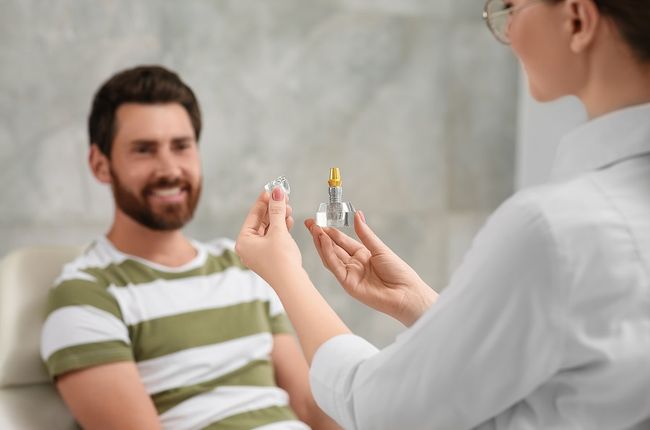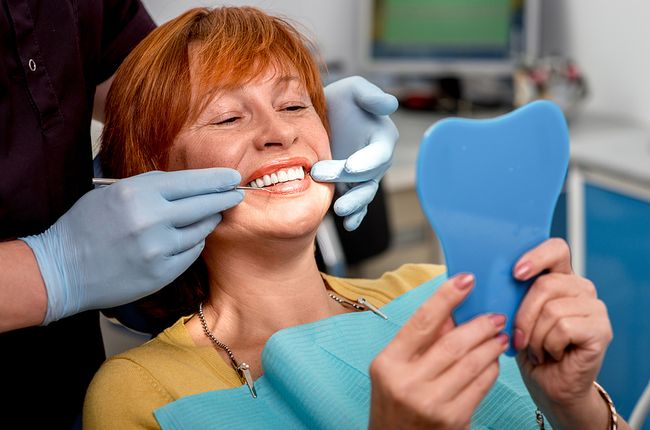Sinus Grafting
Sinus grafting is a surgical procedure performed to augment the bone volume in the posterior maxilla, specifically in the area of the maxillary sinus. This procedure is typically recommended when there is insufficient bone height in the upper jaw to support the placement of dental implants. By adding bone graft material to the sinus cavity, the sinus floor is elevated, creating additional space for implant placement and ensuring stable and long-lasting results.
Types of Sinus Grafts
There are several approaches to sinus grafting, each tailored to the patient's specific anatomical considerations and treatment goals:
- Lateral Sinus Lift
The lateral approach involves accessing the sinus cavity through a small incision in the side of the jawbone. The sinus membrane is gently lifted, and bone graft material is packed into the space created beneath the membrane. This technique is suitable for patients with moderate to severe bone loss in the posterior maxilla.
- Osteotome Sinus Floor Elevation
The osteotome technique utilizes specialized instruments called osteotomes to gently elevate the sinus floor from within the implant site itself. This minimally invasive approach is ideal for patients with mild to moderate bone loss and can often be performed simultaneously with implant placement.
- Crestal Sinus Lift
The crestal approach involves accessing the sinus cavity through the implant site itself without the need for a separate incision. A small window is created in the bone, and bone graft material is packed into the space beneath the sinus membrane. This technique is typically used in cases where there is limited vertical bone height and is known to have shorter healing times. Call us to learn more.
The Sinus Grafting Procedure
The sinus grafting procedure involves several key steps, which may vary depending on the specific technique used and the patient's individual anatomy. However, the general sequence of events typically includes the following:
- Preparation
Prior to the surgery by the dentist in Jacksonville Beach, FL, the patient undergoes a thorough evaluation, including diagnostic imaging such as cone beam computed tomography (CBCT) scans, to assess the anatomy of the sinus cavity and plan the grafting procedure accordingly. Local anesthesia is administered to ensure patient comfort during the procedure.
- Accessing the Sinus
Once the patient is properly anesthetized, the surgical site is prepared by making a small incision in the gums to access the underlying bone. The location and size of the incision may vary depending on the chosen approach to sinus grafting (e.g., lateral, crestal, or osteotome technique).
- Sinus Elevation
With access to the bone, the surgeon carefully creates a window or access point in the lateral wall of the maxillary sinus, allowing entry into the sinus cavity. The sinus membrane, which lines the interior of the sinus, is gently lifted or elevated from the sinus floor, creating a space beneath the membrane for the placement of bone graft material.
- Graft Placement
Once the sinus membrane has been elevated, bone graft material is packed into the space created beneath the membrane. The type of graft material used may vary and can include autografts (bone harvested from the patient's own body), allografts (donor bone from a human cadaver), xenografts (bone from another species, typically bovine or porcine), or synthetic materials. The graft material serves as a scaffold or matrix for new bone formation and helps to stimulate the body's natural healing processes.
- Closure
After the graft material has been placed, the incision in the gums is carefully sutured closed, and the surgical site is covered with a protective membrane or barrier to promote healing and prevent contamination.
- Recovery and Healing
Following the sinus grafting procedure, patients are typically given postoperative instructions to follow, including guidelines for oral hygiene, diet, and activity restrictions. It's essential to adhere to these instructions to promote optimal healing and minimize the risk of complications. Over time, the body's natural healing processes will remodel the graft material and stimulate the formation of new bone tissue, gradually integrating it with the surrounding bone.
- Implant Placement (if applicable)
Once the bone has healed and the graft integrated successfully, dental implants may be placed into the augmented bone to support dental restorations such as crowns, bridges, or implant-supported dentures. Depending on the patient's individual treatment plan, implant placement may occur simultaneously with sinus grafting or as a separate procedure following adequate healing.
Overall, the sinus grafting procedure is a valuable technique in implant dentistry, allowing patients with insufficient bone in the posterior maxilla to achieve stable and predictable outcomes with dental implants. By understanding the steps involved in the sinus grafting procedure, patients can make informed decisions about their dental treatment and feel confident in the care provided by their dental team.
Recovery and Aftercare
Following sinus grafting surgery, patients may experience some swelling, bruising, or discomfort, which can typically be managed with pain medication and cold compresses. It's essential to follow your dentist's postoperative instructions carefully to promote optimal healing and reduce the risk of complications. Some general guidelines for recovery and aftercare may include:
- Avoiding strenuous activities and excessive physical exertion during the first few days following surgery
- Eating a soft or liquid diet to minimize pressure on the surgical site
- Practicing good oral hygiene by gently rinsing with saltwater and avoiding vigorous brushing or flossing near the surgical area
- Attending follow-up appointments with your dentist in Jacksonville Beach, FL to monitor healing progress and ensure the success of the grafting procedure
Potential Complications
While sinus grafting procedures are generally safe and effective, there are some potential risks and complications associated with the surgery. These may include:
- Infection at the surgical site
- Bleeding or hematoma formation
- Perforation of the sinus membrane
- Graft rejection or failure
- Delayed healing or inadequate bone formation
It's essential to discuss any concerns or questions you may have with your dentist before undergoing sinus grafting surgery to ensure you have a clear understanding of the procedure and its potential risks.
Conclusion
Sinus grafting is a valuable technique in implant dentistry, providing a solution for patients with insufficient bone in the posterior maxilla. By understanding the purpose, types, procedure, recovery, and potential complications of sinus grafting, patients can make informed decisions about their dental treatment and take proactive steps to maintain their oral health. If you have any questions or would like to learn more about sinus grafting and its applications in dentistry, don't hesitate to contact your dentist for personalized guidance and care.
Ready to take the next step toward optimal oral health? Contact Beaches Oral and Maxillofacial Surgery today at (904) 246-6545 or visit us at 472 Jacksonville Dr., Jacksonville Beach, FL 32250. Our skilled team is dedicated to providing exceptional oral and maxillofacial care in a comfortable and welcoming environment.
Office Hours
MON8:00 am - 4:00 pm
TUE8:00 am - 4:00 pm
WED8:00 am - 4:00 pm
THU8:00 am - 4:00 pm
FRI8:00 am - 2:00 pm
SATClosed
SUNClosed









